The building is a form of body, which like any other consists of lineaments and matter, the one the product of thought, the other of Nature; the one requiring the mind and the power of reason, the other dependent on preparation and selection; but we realized that neither on its own would suffice without the hand of the skilled workman to fashion the material according to lineaments.—Leon Battista Alberti, On the Art of Building in Ten Books, Prologue.5
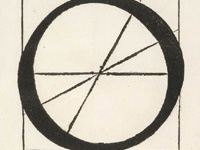 Fig. 3.1. The "most perfect" O. Fig. 3.1. The "most perfect" O. |
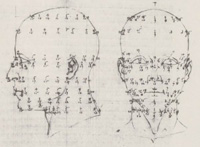 Fig. 3.2. Mensurations of the human head. Fig. 3.2. Mensurations of the human head. |
1From a historical vantage, the Montefeltro studioli are often regarded for their display of mathesis universalis, the notion of a proportional harmony underlying all phenomena. This harmony, it was believed, could be divined through the mathematical arts, including music, astronomy, arithmetic, and geometry, and conveyed by drawings and models cast from the architect's imagination through the hand of the fabricator to frame human activities. In the studioli, this commensurability is embodied in the virtuoso marriage of intarsia and the principles of artificial perspective, developed empirically in the early 15th century by Filippo Brunelleschi and formalized by Leon Battista Alberti in De pictura.1 Although this work was conceived for the art of painting, it was the intarsiatori, rather than painters, who were first considered the maestri di prospettiva, likely due to a metaphoric kinship between the cut of the intarsist's knife across the wood and the cut of the eye across the latticed surfaces of a perspectivally harnessed space.
2 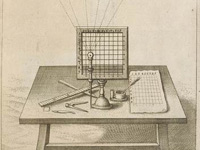 Fig. 3.3. A perspectival velo of intersections.Alberti likely contributed to the notion of a perspectival arrangement for the Montefeltro intarsia, given his long-standing friendship with Federico and several members of the Urbino court, including Piero della Francesca.2 In the following century, Giorgio Vasari would recount how Brunelleschi had shown his method to Florentine intarsiatori, "stimulating them to such an extent that he gave rise to many good and useful things produced in that art both then and afterwards which have brought fame and profit to Florence."3 In the years during which the studioli were fabricated, Vasari notes, "there were no fewer than 84 [Florentine] botteghe where tarsia work was in full practice."4 The popularity of this medium in the quattrocento was reflected in the The Fat Woodworker, a humorous story in which Brunelleschi plays a practical joke on a hefty intarsist named Manetto, making him "vanish."5
Fig. 3.3. A perspectival velo of intersections.Alberti likely contributed to the notion of a perspectival arrangement for the Montefeltro intarsia, given his long-standing friendship with Federico and several members of the Urbino court, including Piero della Francesca.2 In the following century, Giorgio Vasari would recount how Brunelleschi had shown his method to Florentine intarsiatori, "stimulating them to such an extent that he gave rise to many good and useful things produced in that art both then and afterwards which have brought fame and profit to Florence."3 In the years during which the studioli were fabricated, Vasari notes, "there were no fewer than 84 [Florentine] botteghe where tarsia work was in full practice."4 The popularity of this medium in the quattrocento was reflected in the The Fat Woodworker, a humorous story in which Brunelleschi plays a practical joke on a hefty intarsist named Manetto, making him "vanish."5
3By the cinquecento, however, enthusiasm for intarsia had waned. "Although it may indeed be both praiseworthy and masterly," Vasari notes, producing " . . . figures, fruit, and animals . . . most lifelike," the practice was condemned as "time thrown away in vain . . . since it is a work that soon becomes black . . . and is also of short duration because of worms and fire."6 As further evidence of the medium's diminished status, Vasari cites the career of Benedetto da Maiano, a Florentine master who with his brother Giuliano executed much of the intarsia in the Montefeltro studioli.7 Benedetto, who is described as one of the finest intarsiatori, eventually judged the medium "a useless thing and completely abandoned it."8 Fortuitously, then, the studioli offer the most comprehensive examples of Renaissance perspectival intarsia to have survived the subsequent centuries of despoliation, relocation, ad hoc restorations, fire, and woodworms.
4From comments made by Federico's biographers and scholars, as well as those offered by the duke himself, one might assume that the court of Urbino held the mathematical arts in preeminence to the verbal arts.9 In his patent of 1468, awarding Luciano Laurana the architectural commission for the ducal palace at Urbino, Federico famously declared: "We deem as worthy of honor and commendation men gifted with ingenuity and remarkable skills, and particularly those which have always been prized by both Ancients and Moderns, as has been the skill [virtù] of architecture, founded upon the arts of arithmetic and geometry, which are the foremost of the seven liberal arts because they depend upon exact certainty."10 Although this passage might seem to quell further doubts on the matter, we must consider a curious and telling detail: if the arts of arithmetic and geometry were perceived as preeminent to the verbal arts, why then was Guidobaldo—the young heir-apparent to Federico's dukedom—depicted in the Gubbio studiolo with the art of rhetoric and not with one of the mathematical arts?
5This question may be addressed on (at least) three levels. In humanistic pedagogy, the verbal arts offered precepts for the early stages of learning, and in fact the construction of the Gubbio studiolo coincided with this period of Guidobaldo's education.11 Second, highly cultivated skills of diplomatic eloquence and persuasion were required to negotiate the interlacing wiles of an Italic peninsula constantly in turmoil, whether among its own fractious powers or in the shadow of the encroaching Ottoman Empire. It was not out of humanist conceit that Guidobaldo's tutor Ludovico Odasio considered the "powers" of eloquence and an extensive acquaintance with history to be "the great aim of a princely education."12 Duke Federico's own successful career had greatly hinged on the interception of and vituperative response to a discrediting letter written by his lifelong nemesis, Sigismondo Malatesta.13
6The third and most comprehensive response forms the basis of this study. During the Renaissance, and particularly at the court of Urbino, categorical divisions of thought and learning were more fluid and hypothetical than we might expect: the pursuit of one mode of learning was perceived not as contrary to but rather to the enrichment of another.14 While architecture, for example, represented a consummation of mathematics (as evident in Federico's patent), it served also as an educational model for memory building and oration. Consequently, the study of rhetoric was not limited to oral and verbal expression: by its architectonic precepts, rhetoric was intimately interlaced with mathematics.
7In fact, it was not unusual that a renowned mathematician such as Paul of Middleburg, who served as court astrologer for both Federico and Guidobaldo, had transcribed a treatise on rhetoric earlier in his career. Numerous contemporary works on rhetoric underscored the significance of mathematics in oratory training,15 while other ancient and popular texts presented the mathematical-linguistic relationship from a complementary angle. In Plato's Timaeus, for example, the story of Phaëthon is described as a myth that helps to explain the cyclical motions of the celestial bodies.16 Nonetheless, as history tends to alight on the unusual and overlook the commonplace, evaluations of the studioli have centered on the historical significance of the perspectival compositions and their mathematical underpinnings.
8It is probably for this reason that the mnemonic character of the studioli has not been previously addressed.17 As Peter Thornton notes, "In trying to envisage how our ancestors lived at any period, certainty is of course hard to come by and, all too often, one has to guess. Particularly difficult is to discover what people at the time took for granted, which is something they obviously do not bother to tell us."18 For the quattrocento, memory training was deeply embedded in humanist pedagogy, not only through the recuperation of classical treatises that address this subject directly, such as those composed by Cicero and Quintilian, but also because this tradition had already been incorporated into, and transformed by, medieval practices of meditation. From ancient Greece through the Renaissance, a well-trained memory was perceived a pedagogical fundamental for reciprocity between thought and action. One did not cultivate a fine memory for its own sake, or merely as a vehicle for accurate information recall, but as the essential mental equipment for the formation of one's character.
9A translation and analysis of the Ars memorativa of Jacobus Publicius, a treatise originally composed around 1460 and first printed in 1482, offers insight into commonplace mnemonic practices during the period in which the studioli were constructed.19 Frequent and widespread printings of this work—Venice, Augsburg, Cologne, Toulouse—attest to the subject's popularity. General familiarity with the memory arts at this time was due largely to the efforts of the mendicant orders, which had distributed their precepts throughout Europe in previous centuries. It is not surprising, then, if we discover striking consistencies between recommendations in this treatise and the visual character of the studioli.20
10A further challenge to assessing the mnemonic quotient of the studioli is the practical matter that memory is not a simple subject to retrace. Like time, memory has historically proven an evocative yet evasive notion.21 As Frances Yates observes, "Memory architecture was invisible: it used buildings for its purposes, but we can never see into the actual memories in which these buildings were reflected."22 Although manuals and pedagogical diagrams instructed the novice on various procedures for memory training, they scarcely hint at the most vital part of the exercise, mnemonic invention, characterized by fluid, even improbable associations. Images (described and illustrated) in memory treatises like Publicius's provided rudimentary "staples" for visualization exercises. Advanced memory work consisted in fabricating personalized images, culled from one's experience and arranged in the imagination as a mental theater of memory prompts for the mind's eye.
11 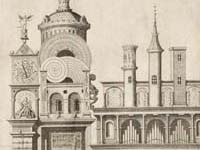 Fig. 3.4. A musical memory palace.Having reached their zenith in popularity in the 16th and 17th centuries, the arts of memory gradually faded from common practice. Subsequently, a prodigious memory has been regarded more often as an anomaly to be displayed at a sideshow or studied by a neuropsychologist as opposed to a craft cultivated with patience and discipline.23 For these many reasons, the more traditional and less extolled rhetorical and mnemonic undercurrents of the studioli have become obscured.
Fig. 3.4. A musical memory palace.Having reached their zenith in popularity in the 16th and 17th centuries, the arts of memory gradually faded from common practice. Subsequently, a prodigious memory has been regarded more often as an anomaly to be displayed at a sideshow or studied by a neuropsychologist as opposed to a craft cultivated with patience and discipline.23 For these many reasons, the more traditional and less extolled rhetorical and mnemonic undercurrents of the studioli have become obscured.
12If the mnemonic tradition is indeed a cultural fossil, as Lina Bolzoni has suggested, the Montefeltro studioli are informative carapaces.24 An appreciation of mnemonic constructs such as the studioli calls for a different, more ponderous mode of investigation than has been previously pursued. Perhaps, as Mary Carruthers suggests, "the first question one should ask of such an image [environment] is not 'What does it mean?' but 'What is it good for?'"25
13It is possible to enrich our understanding of the studioli by pursuing a line of inquiry hinted upon by Alberto Pérez-Gómez: "The [studioli] intarsia constituted the stage for a new orbis studiorum, a new definition of knowledge distinct from medieval theology but not distant from its aspirations."26 How did the studioli redefine the "sphere of knowledge"? What were their classical and medieval precedents, and how are they similar to and different from them?
14The significance of the studioli is multistranded and multilayered: multistranded in that the chambers manifest a complex interweaving of multiple traditions of material and mental craft; multilayered in that individual images could bear multiple meanings, whether alone or as part of an ensemble. It is not fitting to seek a conclusive meaning for any single image: each invites an initial iconographic reading that must expand to consider various autobiographical, pedagogical, theological, and propagandistic contingencies. By delving into the significance(s) of a given image, we begin to discover resonances with other images and to perceive subtle relations that enlace the chambers.
15This investigation dwells on images whose mnemonic associations have not been previously assessed. Some have been analyzed for their iconographic relation to Prudence, a cardinal virtue for which Duke Federico was renowned.27 In the quattrocento, as David Summers has noted, Prudence was considered "a virtue of the practical intellect, the concerns of which were usually thought to be ethical and political."28 Deeper associations between Prudence and memory, however, have not yet been considered with regard to the studioli imagery.
16Cicero, a humanist role model whose name appears in the Urbino studiolo intarsia as "TVLIO," considered memory integral to the virtue of Prudence. "Memory is the faculty by which the mind recalls what has happened. Intelligence is the faculty by which it ascertains what is. Foresight is the faculty by which it is seen that something is going to occur before it occurs." As the consummation of these three temporal aspects, Cicero defined Prudence as "the knowledge of what is good, what is bad and what is neither good nor bad."29 Considering Cicero's strong influence at the court of Urbino, this passage offers a promising clue. Other images, too, in the studioli—those related to chess, for example—have received only cursory interpretations; their mnemonic ramifications have also remained unrecognized and will be examined.
17 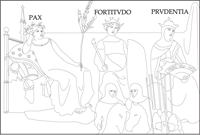 Fig. 3.5. Detail of the virtues from the Allegory of Good Government.
Fig. 3.5. Detail of the virtues from the Allegory of Good Government.
Extended Caption 2There is also a more "hands-on" approach to understanding the studioli. By marveling at the material and intellectual ingenuity expressed in the studioli, we have already begun to apprehend what the studioli are "good for" and, more broadly, to intuit their contribution to "a new orbis studiorum." The visual stimulation experienced in these chambers points to a multisensorial approach to thought in which the training and exercise of the memory was not purely intellectual but an emotional, whole-body experience, integrating the sensible and intelligible. Architecture provided, physically and metaphorically, a model conducive to this integration. Entrance into thought was perceived to be equally physical and mental, opening a channel between the eye of the mind and the corporeal senses. The spatial character of architectural mnemonics—that one would "perambulate" cloisters and palaces in the mind, composing narratives with the ornaments and images arrayed therein—reflects a phenomenological dimension to thought that may be quite foreign to a modern-day observer.
18In Federico's day, the humanist archaeology of classical texts and architectural ruins nourished the imaginations of patrons and architects with examples of public and private spaces by which to "enter into thought." Along with the contemplative eddies in the medieval cathedral,30 intimate domestic settings modeled after the ancient Roman exedra and cubiculum—described by Vitruvius and Pliny and unearthed in the 1470s—provided prosthetic armatures for thought. Their spatial arrangements and ornament prepared a quattrocento mind with visual tropes that literally fed the imagination with materials for cogitation. In the compositions of the studioli we find an amalgam of classical and medieval attitudes toward cognitive architecture. The practice(s) of cogitation, as we shall see, called on physical settings that could move an observer, literally and figuratively.
19In previous scholarship, there has been difficulty in accounting for certain perspectival illusions in the studioli that engage the observer physically and evade categorical assessment. These illusions are not merely sleight of hand-eye coordination or propagandistic demonstrations of patronly magnificentia or technical prowess; fundamentally, they evoke an ambience of wonder ideal for stimulating the mind and, in particular, the memory. As Aristotle notes in his discussion of education in Politics, a favorite of Federico's, "to have the habit of feeling delight (or distress) in things that are like reality is near to having the same disposition toward reality itself."31 On first reading, we might interpret the realism of the studioli "contents" as an expression of a desire to imitate reality as an achievement unto itself. However, considered in light of architectural mnemonics, the veracity of imagery would have facilitated the rehearsal of appropriate thoughts and habits, like just and prudent leadership, to be enacted in "reality itself." Further distillation of works such as the studioli, then, calls for a mode of inquiry that delves beyond iconographic groundwork to engage their densely layered imagery and the emotional impact of their compositions. A key to the workings of the studioli is offered through a better understanding of the workings of the memory in the quattrocento mind.
20Until well into the Renaissance, the memory was fashioned as a storage place (literally, an ark) for experience and as an engine for its interpretation and reconstitution. "You were trained to furnish the rooms of the mind," Carruthers observes, "because you cannot think if you do not have something to think with."32 Demonstration of a well-furnished memory, on the battlefield or in matters of diplomacy, conveyed one's capacity for crafting thought. Subsequently, the perception that we make our own thoughts, from any and all available materials, has gradually given way to the more passive notion that thoughts are things we simply have.
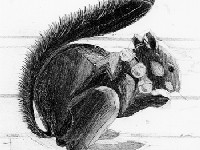 Fig. 3.6. Collared squirrel, Urbino studiolo. Fig. 3.6. Collared squirrel, Urbino studiolo.Extended Caption 3 |
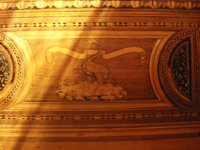 Fig. 3.7. Crane, Gubbio studiolo. Fig. 3.7. Crane, Gubbio studiolo.Extended Caption 3 |
21 How did Federico and his colleagues fabricate their thoughts? Freshly imbued with Greek and Persian notions of micro- and macrocosm, a quattrocento mind was preoccupied with concrete and metaphoric implications of harmoniai—modes of fastening that supplied architectural, musical, and humoral connotations. From Homer through Hippocrates, a properly built boat and a virtuous human had been considered to be "well balanced" in construction.33
22Healthful symmetry was the objective for politics as well. Themes of reconciliation and universal harmony, such as Alberti's concinnitas and Cusa's coincidentia oppositorum, were counterposed to a litany of crises in faith, politics, and scholarship. The decay of Byzantium brought to Italy an influx of such Greek scholars as Argyropoulos, Cardinal Bessarion, and George of Trebisond (to name only a few), whose direct familiarity with Hippocrates, Plato, Plotinus, Euclid, Ptolemy, and the Corpus hermeticum introduced a fresh set of considerations for Western thought. The meeting of oriental and occidental wisdom problematized (and impregnated) the mind with new possibilities, from meditation and health to accounting, the architecture of time, and the cosmos.
23In Ptolemy's encomium at Urbino, for example, Federico expresses gratitude to the father of astronomy for his precise measurement of the stars and for imposing lines on the earth.34 The rediscovery and rapid dissemination of Ptolemy's works on mapping, accompanied by the flowering of perspective, was closely followed in 1474 by Paolo Toscanelli dal Pozzo's use of a grid of lines to speculate on a westward passage to the Orient. Soon after, this map provided the rhetorical equipment necessary for Columbus to persuade his patrons of the plausibility of such an endeavor.
24Even as the earliest seeds of this enterprise were forming, Alberti, Cusa, and Ficino were beset with the challenge of fitting Plato together with Aristotle, pantheism with monotheism, princely magnificentia with the virtue of Temperance. These were matters addressed delicately, with great diplomacy. The arrival of Byzantine scholars encouraged a lineage of Western scholars35 to digest and reincorporate an Eastern heritage into a canon that only recently, and contentiously, had absorbed Aristotle. The treatises of Nicholas of Cusa, for example, addressed a broad spectrum of public and private modes of harmonization, from the revision of the calendar and debates of church and state to manuals for meditation. Likewise, Alberti's insistence on the importance of music for an architect reflects the ethical sentiments of Boethius (also depicted at Urbino), who urged that music is concerned with both speculative truth and morality and that "the soul of the universe is united by musical concord."36
25 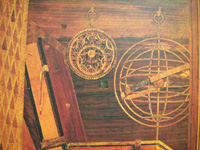 Fig. 3.8. Astrolabe and armillary sphere, Urbino studiolo.
Fig. 3.8. Astrolabe and armillary sphere, Urbino studiolo.
Extended Caption 4Misfortune could be cast by the stars or caused by human fickleness. Alliances could shift with the wind, leaving all policies "doubtful." In counterpoint to human frailties and unpredictable fortuna, harmony provided an ethical matrix for contemplation and worldly action. Mediation, prudence, temperance, concord, dissimulation—these ideals for human comportment were believed to bind divine graces to the realm of human affairs. In the face of uncertainty, works of art and architecture embodied enduring lessons in prudence.
26Throughout the quattrocento, the craft of thought used the visible processes and products of material craft as a medium to explain and train the invisible workings of the mind. Metaphors of architectonic storage and material assembly employed in memory training helped the individual translate sense impressions into imaginary vessels (wax tablets, change purses, dovecotes, palaces, cities) that preserved experience and kept it close "at hand."37 Works of intarsia, for example, are assembled from layers of geometric puzzle-pieces formed according to their precise locations in a larger scheme—a process that demands careful planning and execution. When fitted together, they demonstrate the harmonia of a material craft that embodies an intellectual tradition of splitting ideas into categorical parts and compositional units for reassembly.38
27  Fig. 3.9. Exploded axonometric of assembly of an intarsia panel in the Gubbio studiolo.
Fig. 3.9. Exploded axonometric of assembly of an intarsia panel in the Gubbio studiolo.
Extended Caption 5As a recombinatorium for ideas, a well-trained memory provided a speculative mechanism for change. Although we tend to imagine the Renaissance humanists to be encaged in a closed universe, awaiting the liberating flights of Columbus and Copernicus, Federico da Montefeltro's rise from military captain (with questionable birthright) to duke offers an example of the capacity, through shrewd diplomacy, to seduce fortuna and intervene in one's own fate. This theme was central to the writings of Baldassare Castiglione on the ideal courtier and Niccolò Machiavelli, who in his treatise on ideal rule, The Prince, surmised that "it may be true that fortune is the ruler of half our actions, but that she allows the other half or thereabouts to be governed by us."39 According to Machiavelli, in order to govern this "other half or thereabouts" appropriately, it was necessary to master fortune—if need be, "to conquer her by force."40 To ascend within the prevailing social structures and endure the vicissitudes of quattrocento political life required a balanced and agile character—at once cautious or impetuous, as the occasion demanded.41
28Traditionally, memory training centered on enhancing one's ability to respond judiciously to a given circumstance by keeping a prudent eye cast toward the implications of one's actions. The "actual past" existed not as an inert body of facts or "information" to be accurately or inaccurately retrieved but rather as a resource for personal refinement and communal participation. Duke Federico's biographer Vespasiano da Bisticci expresses a common sentiment when he describes the past as the "mirror of the present."42 By recollecting the lessons of the past, one could more precisely prognosticate the future and calibrate one's actions advantageously in the present. Cultivation of such virtues as Prudence and Temperance offered a causeway to the heavens through their practical guidance in the ethics of earthly matters.43 Amid the extreme political uncertainties of the late quattrocento, an ability to envision the interplay of past, present, and future was acutely significant. Since building memory was perceived as equivalent to building character, for a prince the cultivation of memory was vital in preserving the state, one's family, and oneself.
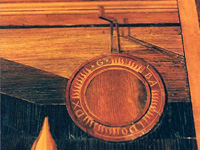 Fig. 3.10. Mirror, Gubbio studiolo. Fig. 3.10. Mirror, Gubbio studiolo.Extended Caption 6 |
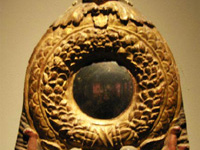 Fig. 3.11. Convex mirror and surround fabricated by the Maiano brothers, 1480. Fig. 3.11. Convex mirror and surround fabricated by the Maiano brothers, 1480.Extended Caption 6 |
29The studioli of the Montefeltro may be seen as open manuals for navigating the intricacies of the late Italian quattrocento, providing the duke and his son with treasuries for personal experience, sources of willpower, and templates for action. At Urbino, Federico, his advisers, and his craftsmen fabricated an engine for governance and diplomacy, distilling the influences, qualities, and rewards of a leader recognized for his prudence in the field of action and in the meting of civil justice. In the Gubbio studiolo, we find an engine for a young prince's education,44 an incubator for the duke that Guidobaldo was, it was hoped, to become.
Notes
Note 1: Alberti dedicated the Italian translation of the treatise, Delle pittura, to his friend Brunelleschi. back
Note 2: Alberti and Piero had known one another for many years; Sigismondo Malatesta commissioned both for various projects in the 1450s, and they were in the Roman humanists' circles in the late 1450s. More specific to the Urbino connection, Alberti visited Urbino in 1464, and Piero entered the duke's patronage in 1469. back
Note 3: Vasari, Lives of the Painters, Sculptors and Architects, 81. back
Note 4: Vasari, On Technique, 305. back
Note 5: Manetti, Fat Woodworker. In this story, set in 1409, we find that Manetto had worked in the bottega of Maestro Pellegrino in Via Terma. "Most believe that the victim [of the prank] was Manetto di Jacopo Ammannatini (d. 1450) called Manetto of Florence, a worker in intarsia, since the details of his life closely match those of the story" (xvi). According to the translators, Giorgio Vasari obtained most of his biographical information about Brunelleschi through the writings of Antonio Manetti (unrelated to the intarsist), whose interests in mathematics, astrology, and geography endeared him to Marsilio Ficino and the Platonic Academy, as well as to Paolo Uccello and Paolo Toscanelli. back
Note 6: Vasari, On Technique, 263. back
Note 7: A detailed analysis of the practice of intarsia and the fabrication of the studioli intarsie in particular is offered by Wilmering, Gubbio Studiolo, 2:105. back
Note 8: Vasari, On Technique, 262. Wilmering counters Vasari concerning Benedetto's career (Gubbio Studiolo, 2:106). back
Note 9: Vespasiano da Bisticci underscores the duke's keen interest in mathematics and architecture. This emphasis, is not however, at the expense of (or at odds with) his interest in the verbal arts. "Federigo, Duke of Urbino," in Vespasiano da Bisticci, Vespasiano Memoirs, 84–114. back
Note 10: "La Virtù dell'architettura fundata in l'arte dell'aritmetica e geometria, che sono delle sette arti liberali, e delle principali, perché sono in primo grado certitudinis, ed é l'arte di gran scienza e di grande ingegno, e da noi molto estimata e apprezzata." See Chambers, Patrons and Artists, 165. Also Wittkower, Architectural Principles, 67n2. back
Note 11: Training in the verbal arts commenced at age six or seven. Guidobaldo was born in 1472, and the Gubbio studiolo was constructed between 1476 and 1483 (according to Olga Raggio, between 1480 and 1483). back
Note 12: Dennistoun, Memoirs of the Dukes of Urbino, 298. back
Note 13: Vituperation (or psogos), an invective that discredits an adversary, is another of the progymnasmata exercises. In general, letter writing was considered a significant practice of rhetoric. A well-stocked Renaissance library such as Federico's included letters composed by classical authors and Church Fathers as templates for correspondence. See Kristeller, Renaissance Thought and Its Sources, 224. back
Note 14: In his discussion of leisure, play, and education in Politics (1338a37), Aristotle notes: "There are some useful things, too, in which the young must be educated, not only because they are useful (for example they must learn reading and writing), but also because they are often the means to learning yet further subjects . . . to be constantly asking 'what is the use of it?' is unbecoming to those of broad vision and unworthy of free men." Medieval and Renaissance treatises on education offered unceasing variations on the number and nature of these arts. Within the court of Urbino, Luca Pacioli offers various categories for knowledge in his De divina proportione. See Pérez-Gómez, "Glass Architecture of Fra Luca Pacioli." back
Note 15: For a discussion of the complementarity of rhetorical "figures" of speech and mathematical-geometrical figures during the Renaissance, see Saiber, "Giordano Bruno's Geometry of Language," chap. 1. In particular: "It is worth observing that the tropes refer to the same spatial concept: hyperbole refers to something that is thrown beyond or is in excess; parable to something that is thrown alongside or is comparable to; and ellipsis to something that is left out, or is in deficit. Both geometry and rhetoric are arts of demonstration and persuasion. They are figurative languages, nomenclatures informed by shape and space" (25). back
Note 16: Calcidius' translation of the Timaeus was present in the ducal library (I.V. #224). The popularity of Plato in the 1470s is due in great part to the efforts of Marsilio Ficino and the Platonic Academy in Florence. In January 1482, nine months before Federico's death, Ficino dedicated several volumes of his letters and writings to the duke, including commentaries on Plato and his own translation of the Corpus hermeticum. See Pernis, "Ficino's Platonism and the Court of Urbino," 58. back
Note 17: In previous studies of the studioli, the subject of memory and its influence on the late quattrocento mind (and architecture) does not appear as a topic or as an indexical term for cross-reference. back
Note 18: Thornton, Italian Renaissance Interior, 17. back
Note 19: According to Bayerle and Carruthers, who consider this work "an important representative of the transmission of medieval memory techniques to the Renaissance," Jacobus Publicius's treatise was the first Ars memoriae to be printed, by Erhard Ratdolt in Venice, in 1482. It was frequently printed thereafter (Cologne, 1483; Venice, 1485 and 1490; Augsburg, 1490) and directly influenced memory treatises of the following century, namely Johannes Romberch's Congestorium artificiose memorie (1533). I thank Mary Carruthers for providing an unpublished version of this translation. back
Note 20: The thematic material used for memory training also provided commonplace subject matter for works of art produced for centers as distant as Urbino, Flanders, and Spain. Virgil and his Aeneid, a mnemonic primer, provided imagery for the studioli intarsie, and tapestries woven for Federico by Jean Grenier of Tournai, which were produced in the 1470s. Another contemporary tapestry, produced in Tournai for the cathedral of Toledo, Spain, refers to Virgil's wisdom regarding astrology. See Kemp, "Editorial Notes" for Circa 1492, item 111, pp. 214–15. back
Note 21: Definitions of time and memory have tended to focus on their evasive character. Writing in the 13th century, the monk Bonus Socius describes the use of memory as "the same as placing something in a little bag containing holes. It falls out at once." Concerning time, Marsilio Ficino notes: "Time is by nature something fluid and slippery. Its condition is liquid in the sense that if you confine it in a narrow place, you suddenly lose it. Its forces flow away and quickly scatter. If you compress water into a sponge and squeeze it, you immediately lose it. If you give it more room you will retain it." From the letter "What Is Necessary for Composure in Life and for Tranquility of the Soul." See Ficino, Book of Life, 190. back
Note 22: Yates, "Architecture and the Art of Memory," 12. back
Note 23: Luria, Mind of a Mnemonist. back
Note 24: During a workshop for the Department of Medieval and Renaissance Studies at New York University, fall 2000. back
Note 25: Carruthers, Craft of Thought, 118. back
Note 26: Pérez-Gómez and Pelletier, Architectural Representation and the Perspective Hinge, 262, caption 2.57. back
Note 27: In his biography of the duke, Vespasiano underscores Federico's prudence and foresight on the battlefield, in political negotiations, and in matters of civil justice. back
Note 28: Summers, Judgment of Sense, 1987, 22. back
Note 29: Cicero De inventione 2.53.160. A similar phrase is found in the Ad herennium, a popular treatise on oration traditionally attributed to Cicero, a mistake that is evident in the Indice Vecchio (I.V. #445). In it, prudence is described as an "intelligence capable, by a certain judicious method, of distinguishing good and bad; likewise the knowledge of an art is called Wisdom; and again, a well-furnished memory and experience in diverse matters is termed Wisdom." Ad herennium 3.2.3. See also Carruthers, Book of Memory, 176. back
Note 30: Carruthers describes the cathedral as an "engine for prayer" (Craft of Thought, 179, 263). back
Note 31: Aristotle Politics 1340a18. back
Note 32: Carruthers, "City in Our Minds," 11. "There is no thinking, only thinking with." Rose, "Micro-Speculum." back
Note 33: Maria Karvouni notes: "The Homeric harmonies—the means of fastening a structure, a human body, or even a human relationship—gradually became the Platonic (and Pythagorean) harmonies, the metaphorical means of 'binding' the movements of a soul or the movements of the stars reflected by the soul. Plato's harmonies also have musical connotations, yet one should remember that even musical harmonies depend on some kind of fastening: for example, on the tuning of the strings of the musical instrument. Harmony is one of those wonderful words that, in the Greek mind, could assume simultaneously a tectonic, musical, and abstract (mathematical) character. At the same time, harmony is what keeps the human body together and guarantees its good 'tuning' and 'fitting.' . . . In Phaedo, Plato talks about the human body as being held in tension and in tune like a musical instrument" (Karvouni, "Demas," 116). Leonardo Aretino's translation of Plato's Phaedo is I.V. #223 in the ducal library. back
Note 34: "Cl[audio] Ptolomaeo Alexandrino, ob certam astrorum dimensionem, inductasq[ue] orbi terrarum lineas, vigiliis laboriq[ue] aeterno Fed[ericus] dedit." (To Claudius Ptolemy of Alexandria, for his precise measurement of the stars, and because he imposed lines on the earth, for his observations and everlasting toil Federico gave this.) Cheles, Studiolo of Urbino, 93. back
Note 35: A direct line may be drawn, for example, from Platina (if not from Vittorino da Feltre and Guarino da Verona before) through Ficino, Angelo Poliziano, Pietro Bembo, and Giulio Camillo. back
Note 36: Alberti, Art of Building, 9.5–7. Levenson, Measure for Measure, 43. Concord was also perceived a binding force for human relationships. Castiglione describes the presence of the duchess of Urbino (Guidobaldo's wife, Elisabetta) at evening festivities as "a chain that held us all linked in love, so that never was concord of will or cordial love between brothers greater than that which here was between us all." Castiglione, Book of the Courtier, 11. back
Note 37: To expand storage capacity for the accumulation of experiences, mnemonic vessels become increasingly complex, historically; elementary images, such as dovecotes, could be incorporated into more advanced images, such as a memory palace. For example, one might well have perched a dovecote on the roof of a palace located in a city composed of streets compiled from the various cities one had experienced during one's life. In the 16th century, Giordano Bruno was said to have constructed a mnemonic city in which he had placed, side by side, entire streets he had encountered in Paris and London. back
Note 38: Intarsia is akin to mosaic in its painstaking assembly of bits according to a larger composition. The historic parallels of splitting and joining in mental and material craft is deeply embedded in Western languages. Karvouni notes: "Tectonics [and techne] deals with the arrangement of 'distinct units' that the tecton [Homer's shipbuilder/housebuilder] first shapes with his tools and then places and joins together. This dual, seemingly antithetical, activity is what defines tectonics. Since tectonics is literally at the root of architecture (archi-tektonike), this dual mode of operation is also at the core of architecture." Karvouni, "Demas," 106. back
Note 39: Machiavelli, The Prince, 131. back
Note 40: The full passage reads: "It is better to be impetuous than cautious, for fortune is a woman, and it is necessary, if you wish to master her, to conquer her by force." Machiavelli, The Prince, 134. back
Note 41: "One sees a certain prince to-day fortunate and to-morrow ruined, without seeing that he has changed in character or otherwise. [With] fortune varying and men remaining fixed in their ways, they are successful so long as these ways conform to circumstances, but when they are opposed then they are unsuccessful." Machiavelli, The Prince, 131, 134. back
Note 42: Vespasiano da Bisticci, Vespasian Memoirs, 99. back
Note 43: The phrase virtutibus itur ad astra (with virtue one scales the stars) is prominently displayed in the studiolo intarsia at Urbino. The notion of virtù is discussed further in chapter 4. back
Note 44: This research confirms Olga Raggio's suggestion "that the [Gubbio] studiolo itself may have been conceived for Guidobaldo in order to stress the importance that a liberal arts curriculum was to have in his education." However, the studioli not only represented the importance of a liberal arts education; they quite literally embodied its precepts. See Raggio and Wilmering, Liberal Arts Studiolo, 33. back